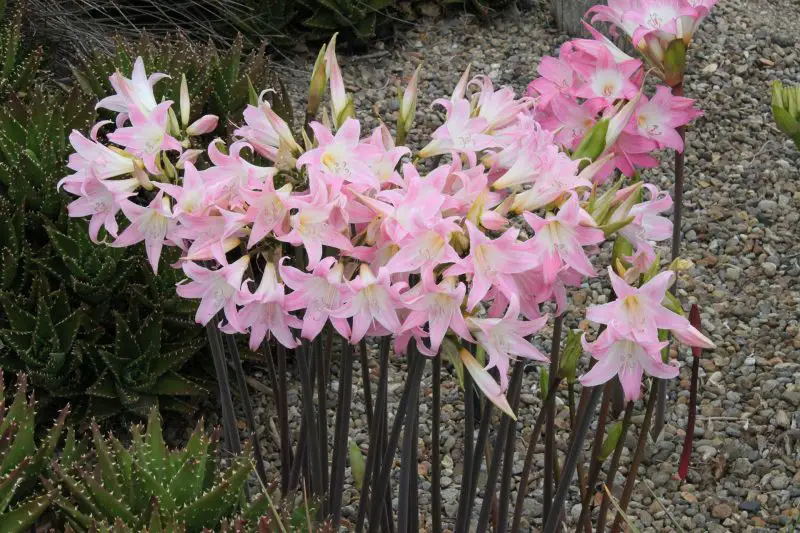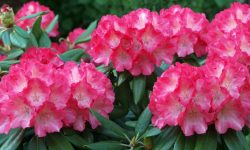Amaryllis plants are known for their breathtaking trumpet-shaped blooms and long, sturdy stems. Though traditionally associated with winter holidays, with the right care, amaryllis can bloom multiple times a year. Understanding their growth cycle, environmental needs, and post-bloom treatment is essential for achieving year-round color from this stunning plant.
In this guide, you’ll learn exactly how to care for amaryllis plants in every season, whether they’re growing indoors or outdoors. From planting bulbs to after-bloom care, fertilization, dormancy, and re-blooming, this comprehensive resource ensures your amaryllis remains vibrant all year long.
Understanding the Amaryllis Life Cycle

Amaryllis follows a predictable cycle of growth, bloom, rest, and rebloom. To keep the plant blooming year-round, it’s important to support each phase of this cycle with appropriate care.
The Active Growing Phase
This phase typically begins in late winter or early spring when the bulb sends up thick green leaves and occasionally a flower stalk. During this time, focus on maximizing sunlight exposure and establishing a consistent watering and feeding routine. Keep the plant near a sunny window where it receives at least six hours of indirect light daily. Fertilize every 2–4 weeks with a balanced houseplant fertilizer to support vigorous foliage development and future flower production.
The Blooming Phase
During the blooming phase, which can occur from late winter through early summer depending on care, the plant produces tall flower stalks that bear large, trumpet-shaped blooms. Reduce watering slightly to prevent soggy soil, and move the plant to a spot with bright but indirect light to prolong flower life. Avoid fertilizing during blooming, as the focus shifts from foliage to floral display. Stake the flower stems if they grow too tall to prevent tipping.
The Post-Bloom Recovery Phase
Once the flowers fade, it’s important not to discard the plant. Cut the flower stalk about an inch above the bulb, but leave the green leaves intact. These leaves are vital for photosynthesis, which replenishes the bulb’s energy stores. Keep the plant in a bright location and resume a feeding schedule every 3–4 weeks. This phase typically lasts several months, and healthy leaf growth during this time directly impacts the success of future blooms.
The Dormant Phase
The dormancy phase allows the bulb to rest and reset. It usually starts in late summer or early fall. When the leaves begin to yellow and die back, gradually reduce watering until you stop altogether. Move the pot to a cool, dark, and dry location such as a basement, closet, or garage. Maintain temperatures around 50–55°F (10–13°C). This rest period should last 8 to 10 weeks. Do not water or disturb the bulb during this time.
Choosing the Right Amaryllis Variety
Choosing the right amaryllis variety is the first step to ensuring year-round color and success. With hundreds of hybrids and cultivars available, each offering unique characteristics such as bloom time, flower shape, color intensity, and growth habit, it’s essential to match your selection with your goals—whether you’re aiming for a holiday bloom, a spring show, or continuous foliage. Carefully curating your amaryllis varieties can lead to a staggered bloom display that spans multiple seasons, giving your home or garden a constant source of beauty and interest.
Early, Mid, and Late Bloomers
Understanding bloom timing is crucial when planning an amaryllis calendar. Early bloomers like ‘Minerva’, ‘White Christmas’, and ‘Cherry Nymph’ tend to flower within 4 to 6 weeks of planting, making them ideal for late fall or holiday displays indoors. These types are particularly favored for gifting or for creating a festive indoor garden in December.
Mid-season varieties, such as ‘Apple Blossom’, ‘Susan’, and ‘Pink Surprise’, typically bloom in 6 to 10 weeks and bring color in the heart of winter or early spring. Late bloomers, like ‘Clown’ or ‘Exotic Star’, may take 10 to 12 weeks or more, often peaking in late spring. This progression allows gardeners to enjoy fresh flowers almost continuously by simply staggering bulb planting or mixing early, mid, and late-season types in a single display.
For indoor growers, managing light, warmth, and moisture during planting helps manipulate timing further—extending bloom longevity and rotating displays.
Evergreen vs. Deciduous Types
Amaryllis varieties fall into two major growth categories: evergreen and deciduous, each with different care requirements and aesthetic appeal.
Evergreen types, such as Hippeastrum papilio (commonly called the Butterfly Amaryllis), maintain their foliage year-round, even after flowering. These are better suited for warmer climates or as houseplants, where stable indoor temperatures allow for continuous photosynthesis. While they still need a short rest, it’s often less pronounced, and with the right care, they may rebloom without a long dormant phase.
Deciduous varieties, including most of the popular holiday hybrids, go completely dormant after blooming. Their leaves naturally yellow and die back, signaling the start of a rest period lasting 8 to 12 weeks. This rest is critical for the formation of the next flower stalk and must be respected with reduced watering and cooler temperatures. Deciduous types are great for those who enjoy a clear seasonal cycle and are willing to commit to a rest-and-rebloom schedule.
Choosing between evergreen and deciduous depends on whether you prefer lush year-round foliage or a reliable burst of seasonal blooms followed by rest.
Recommended Varieties for Repeated Blooming
If you’re looking for amaryllis cultivars that reliably rebloom year after year, a few standout varieties have proven their worth among indoor gardeners and collectors:
‘Red Lion’ is the quintessential red amaryllis, known for its strong stems, rich crimson petals, and dependable blooming behavior. With proper care, this variety can rebloom annually, often producing more than one stalk.
‘Picotee’ brings elegance with its pristine white petals edged in fine red, giving it a delicate, hand-painted appearance. It’s especially striking in bright interiors and often reblooms easily after a dormancy period.
‘Samba’, with its flamboyant ruffled red petals edged in white, offers a dramatic show and tends to produce large flowers and multiple stalks per bulb under optimal conditions.
Other dependable rebloomers include ‘Ferrari’ (deep velvet red), ‘Aphrodite’ (double white with pink streaks), and ‘Gervase’ (a marbled blend of rose and white).
For gardeners looking for variety, mixing rebloomers by color and form adds visual interest across seasons. Be sure to track bloom times and responses to dormancy in a garden journal, so you can refine your selection year after year for optimal year-round display.
Ideal Conditions for Amaryllis Growth
Amaryllis thrives under specific growing conditions that mimic its native subtropical environment. Ensuring optimal light, temperature, and soil quality is essential for consistent flowering.
Light Requirements by Growth Stage
Light plays a critical role in each stage of amaryllis development. During the active growing and post-bloom phases, amaryllis needs at least 6 to 8 hours of bright, indirect sunlight each day. For indoor plants, place the pot near an east- or south-facing window to ensure they receive ample morning sun while avoiding the intense midday rays that can scorch the leaves. When entering dormancy, move the bulb to a completely dark area—such as a basement, garage, or cool closet. Any exposure to light during this rest period can trigger premature growth, weakening the bulb and resulting in poor flowering in the next cycle.
Temperature Preferences for Each Phase
Consistent temperature is essential for healthy amaryllis growth and timely blooms. During the growing season, the ideal temperature range is between 65°F and 75°F (18°C to 24°C). If grown indoors, avoid placing the plant near heating vents, air conditioners, or drafty windows, as sudden temperature changes can stress the plant. When the bulb enters dormancy after the leaves have yellowed and died back, store it in a cool area around 50°F (10°C). Maintaining high temperatures during dormancy or exposing bulbs to sudden shifts can interrupt their natural flowering cycle and may prevent blooming altogether.
Soil and Drainage Needs
Amaryllis requires a well-draining soil mix to prevent root rot, one of the most common causes of bulb failure. An ideal potting mix includes peat moss for light moisture retention, perlite for aeration, and aged bark for organic content and structure. Avoid using heavy garden soil, which tends to hold water too long. When potting the bulb, choose a container with adequate drainage holes and plant the bulb so that one-third remains above the soil line. This planting method ensures good air circulation around the bulb’s neck, minimizing the risk of fungal infections or rot.
How to Plant Amaryllis for Continuous Blooming
Proper planting technique ensures healthy root development and successful flowering. You can plant bulbs in soil or grow them in water for a decorative indoor display.
Preparing the Bulbs
Proper preparation of the bulbs is the foundation for successful blooming. Begin by gently removing any dry, papery outer layers and inspect the roots closely. Cut off any old, shriveled roots and remove those that appear mushy, dark, or emit a foul odor, as these could harbor rot. Healthy roots should be white or tan and firm to the touch. If you’re using stored bulbs or ones that have gone through dormancy, soaking the root plate (the base of the bulb) in lukewarm water for 2 to 4 hours can significantly improve rehydration and jump-start growth. For bulbs that have previously bloomed, assess firmness carefully—discard any that feel soft, spongy, or show signs of mold. Applying a mild fungicide dust to the base of the bulb after soaking can further protect it from infection.
Choosing the Right Container
The choice of pot plays a major role in the health and structural support of your amaryllis. Choose a container that leaves about 1 to 2 inches of space between the bulb and the inner wall—too much space can lead to overly moist soil and root issues. A deep pot is preferable to accommodate long roots, and it should be sturdy enough to anchor the plant as it sends up tall flower stalks. Lightweight pots may tip over, especially when the blooms are in full display, so consider using ceramic or terracotta options for balance. Always ensure the pot includes one or more drainage holes at the bottom to allow excess water to escape and prevent rot. If the pot comes with a saucer, empty it after watering to avoid standing water around the roots.
Planting Depth and Positioning
When planting, position the bulb so that the pointed tip is facing upward and the basal plate is sitting firmly on the potting mix. Fill in around the bulb with your pre-moistened, well-draining soil mix—preferably one rich in organic matter but still airy and light. It’s crucial to leave the top one-third of the bulb exposed above the soil surface, as burying it entirely can increase the risk of rot and suffocation. Press the soil gently but firmly around the bulb to eliminate air pockets and provide stable support. After planting, water the soil until evenly moist but not soggy. Then place the pot in a location that receives bright, indirect light and warmth—ideally around 70–75°F (21–24°C). With proper placement and care, new green shoots should begin emerging in about two to three weeks, signaling the start of the growth cycle and a successful planting process.
Watering and Fertilizing Your Amaryllis
Proper watering and fertilizing play a crucial role in the health and longevity of your amaryllis plant. These tropical bulbs are sensitive to both underwatering and overwatering, so striking the right balance is essential.
Right after planting, give the bulb a deep watering to help settle the soil around the roots. After that, it’s important to wait until you see the first signs of green growth before watering again. During this initial period, the bulb is relying on stored energy and can easily rot if the soil is kept too wet. Once the shoot appears, you can begin a regular watering schedule, keeping the soil consistently moist but never waterlogged. A good rule is to water when the top inch of soil feels dry to the touch. Make sure excess water drains out freely, as soggy soil encourages fungal diseases and root rot.
Fertilizing should begin once the amaryllis is in active growth, typically two to three weeks after the shoot emerges. Use a balanced water-soluble fertilizer—like a 10-10-10 or 20-20-20 formula—diluted to half strength. Apply it every two to four weeks during the growing season to support robust leaves and future blooms. When the plant is in full bloom, you can reduce or pause feeding to avoid unnecessary salt buildup in the soil.
Once flowering ends and the focus shifts to leaf growth, continue fertilizing consistently. This phase is critical because the leaves generate energy through photosynthesis, which is stored in the bulb for the next blooming cycle. Always water before applying fertilizer to avoid burning the roots or the base of the bulb. Never apply dry fertilizer directly on top of the bulb, as this can damage its tissue.
Post-Bloom Care to Restore Strength
After the spectacular blooms of your amaryllis begin to fade, resist the urge to cut the foliage. This is not the end of your plant’s cycle—it’s the beginning of a critical recovery phase. Carefully remove the spent flower stalk by cutting it down to about an inch above the bulb, taking care not to damage the emerging leaves or the bulb itself. The leaves are vital for photosynthesis and will now serve as the plant’s main energy source.
Place the plant in a sunny window where it can receive at least 6 hours of bright, indirect light daily. If growing outdoors in warm climates, you can move the pot to a sheltered spot with morning sun and afternoon shade. Continue watering regularly and feeding the plant with a balanced liquid fertilizer every two to four weeks. This maintenance phase typically lasts from late winter or early spring into late summer.
During this period, healthy foliage should be lush and green. Any yellowing or browning of leaves may indicate underfeeding, poor light, or watering issues. You can occasionally wipe down the leaves to remove dust and keep photosynthesis efficient.
Encouraging Reblooming for the Next Season
To encourage your amaryllis to rebloom in the following year, you’ll need to simulate a natural dormant period. Around late summer or early fall—usually 10 to 12 weeks before you want the plant to bloom—begin the process by gradually reducing watering. Stop fertilizing completely, and allow the foliage to die back naturally. Once the leaves have yellowed and withered, cut them off close to the top of the bulb.
Next, move the pot to a cool, dark, and dry place, such as a closet, basement, or garage where temperatures stay between 50–60°F (10–15°C). During this dormancy, do not water or fertilize. The bulb will rest and begin internal preparations for its next flowering cycle.
After 8 to 10 weeks, inspect the bulb for signs of new growth—usually a small green nub at the top. When you see it, repot the bulb in fresh soil (if needed), water thoroughly, and bring it back to a warm, bright spot indoors. Resume normal watering and feeding schedules.
With proper post-bloom care and a structured dormancy period, your amaryllis can rebloom beautifully year after year, often producing even more impressive flowers as the bulb matures.
Bringing Amaryllis Out of Dormancy
After 8–12 weeks of dormancy, your amaryllis is ready to grow again. Begin by checking that the bulb is firm and healthy. Remove any dried roots or old soil, and soak the base (not the entire bulb) in lukewarm water for 2–4 hours if it looks shriveled.
Repot the bulb in a snug container with well-draining soil, leaving the top third exposed above the soil. Water lightly after planting—just enough to moisten the soil—and increase watering once new growth appears.
Place the pot in a warm, bright spot (68–77°F or 20–25°C). Within 2–3 weeks, you should see a green shoot. Once the flower stalk reaches 4–6 inches, begin feeding with diluted fertilizer every two weeks to support blooming.
With proper care, your amaryllis will reawaken and begin blooming in 6–8 weeks, bringing fresh beauty to your home.
Caring for Amaryllis Indoors vs. Outdoors
Indoors, place your amaryllis near a sunny window with bright, indirect light. Keep the temperature between 65–75°F (18–24°C). Rotate the pot regularly to encourage even growth, and water when the top inch of soil feels dry. Use a balanced liquid fertilizer every 2–3 weeks during active growth. After blooming, cut the flower stalk but keep the leaves to help the bulb store energy.
Outdoors, grow amaryllis in a spot with morning sun and afternoon shade. In USDA zones 8–11, they can stay in the ground year-round; in cooler zones, move them outside only after the danger of frost has passed. Ensure the soil drains well, and feed monthly with a slow-release fertilizer. Water regularly, but avoid soggy conditions that cause rot. In late summer, reduce watering to encourage dormancy before lifting or overwintering indoors.
Adjusting care to suit the location helps amaryllis thrive whether on your windowsill or in the garden.
Common Amaryllis Care Problems and How to Fix Them
Yellowing Leaves
Yellow leaves are often caused by overwatering, poor drainage, or sudden temperature changes. Make sure your pot has drainage holes and allow the top inch of soil to dry before watering again. If the plant is near a drafty window or heat source, move it to a more stable location with indirect light and moderate temperature.
Lack of Blooms
If your amaryllis produces leaves but no flowers, it may not have stored enough energy during the previous growing season. This is often due to insufficient light or early removal of leaves after blooming. Ensure the plant gets full sun (indoors or out) during its growing period and avoid cutting back foliage until it yellows naturally. Feeding with a high-phosphorus fertilizer (like 10-20-10) can also encourage blooming.
Mushy or Rotting Bulb
A soft or rotting bulb is usually the result of waterlogged soil or fungal disease. Remove the bulb from its container, cut away any rotted parts with a sterile knife, and dust the wound with cinnamon or fungicide. Replant in fresh, well-draining soil and water sparingly until new growth appears.
Pests like Aphids, Mealybugs, or Spider Mites
Indoor amaryllis can attract pests, especially during the winter months. Look for sticky residue, webbing, or white cottony spots. Treat infestations by wiping leaves with a damp cloth or spraying with insecticidal soap. For severe cases, isolate the plant and apply neem oil weekly until the pests disappear.
Floppy Flower Stalks
Weak or drooping flower stalks may be caused by insufficient light or a pot that’s too small or light to support the tall blooms. Move the plant to a brighter location, rotate it regularly, and consider staking the stalk. Using a heavier pot can also prevent tipping and provide better balance as the flowers mature.
Propagating Amaryllis for More Blooms
Amaryllis propagation is a rewarding way to expand your collection and enjoy more blooms year after year. The most common method is by separating offsets, which are small bulbs that naturally grow at the base of a mature amaryllis. These offsets should only be removed once they reach about one-third to half the size of the parent bulb—usually after a couple of growing seasons.
To propagate, gently lift the bulb from the soil during its dormancy period, clean off excess dirt, and carefully twist or cut the offset from the mother bulb, ensuring each has some roots attached. Replant the offsets in small pots using well-draining potting mix, and position them with the top third exposed above the soil surface. Keep the pots in a warm, bright spot, and water lightly until new growth begins.
Although it can take 2–3 years before these new bulbs flower, they’ll eventually reward your patience with healthy foliage and vibrant blooms. To encourage faster maturity, feed the young bulbs regularly during the growing season with a balanced, diluted fertilizer. With time and care, propagation not only adds beauty to your home or garden but also gives you the joy of growing new plants from your original amaryllis.
Long-Term Success With Amaryllis
Ensuring long-term success with amaryllis means providing consistent care year-round, including after the flowers have faded. Once blooming is over, it’s crucial not to discard the plant. Instead, shift your focus to helping the bulb recharge its energy reserves. Leave the green foliage intact and continue watering and feeding with a balanced liquid fertilizer every 2–4 weeks. The leaves carry out photosynthesis, which replenishes the bulb and prepares it for the next blooming cycle.
Amaryllis bulbs thrive best when given a clear cycle of growth, rest, and reblooming. After the growing season, usually around late summer to early fall, gradually reduce watering to encourage dormancy. Allow the leaves to yellow and wither naturally before trimming them off. Store the bulb in a cool, dry, and dark place (around 50–55°F or 10–13°C) for at least 8–10 weeks. This rest period is essential to trigger the next blooming phase.
With proper care, an amaryllis bulb can bloom every year for decades. Some even become heirloom plants passed down through generations. Repotting the bulb every 2–3 years, refreshing the soil, and checking for offsets will also keep the plant vigorous and productive. By respecting its natural rhythm and meeting its basic needs, you’ll enjoy spectacular flowers and a healthier plant year after year.
Frequently Asked Questions About Planting Amaryllis
How often should I water my amaryllis plant?
Amaryllis prefers to be kept lightly moist but not soggy. During active growth (spring and summer), water when the top inch of soil feels dry. Avoid overwatering, as it can lead to bulb rot. In the dormant phase, reduce watering significantly—only enough to prevent the bulb from drying out completely.
Can I grow amaryllis outdoors all year round?
In USDA zones 8–11, amaryllis can thrive outdoors year-round in a sunny, well-drained location. In colder climates, the plant should be brought indoors before the first frost. Grow it in pots so you can move it easily between indoor and outdoor conditions depending on the season.
How do I get my amaryllis to bloom again next year?
After the initial bloom, remove the faded flowers and allow the leaves to grow. Keep the plant in bright light, fertilize regularly, and maintain normal watering through spring and summer. In late summer or early fall, induce dormancy by withholding water and storing the bulb in a cool, dark place for 8–10 weeks. Then resume watering and place it in bright light to trigger blooming again.
Why isn’t my amaryllis blooming?
A common reason for amaryllis not blooming is insufficient light or failure to undergo a proper dormancy period. Make sure your plant gets at least 6 hours of sunlight daily during the growing season and experiences a dormant rest for 8–10 weeks before initiating new blooms. Over-fertilizing with nitrogen can also encourage leaf growth at the expense of flowers.
How long do amaryllis flowers last, and can I extend their bloom time?
Amaryllis blooms typically last 2–3 weeks, but this can be extended by keeping the plant in cooler indoor temperatures (around 65–70°F or 18–21°C) and out of direct sunlight once the flowers open. Deadhead spent blooms promptly to conserve the plant’s energy for remaining buds and future growth.
Conclusion
Caring for amaryllis plants year-round may seem complex at first, but with consistent attention and a little seasonal know-how, it becomes a truly rewarding experience. From choosing the right bulb and potting it properly to guiding it through blooming, dormancy, and reblooming cycles, every stage offers a chance to connect with the rhythm of nature. Whether you grow your amaryllis indoors for festive winter color or move it outdoors for a summer revival, this plant can deliver vibrant blooms for years. Commit to understanding its needs, and your amaryllis will thank you with spectacular flowers season after season—bringing elegance, joy, and color into your life all year long.






